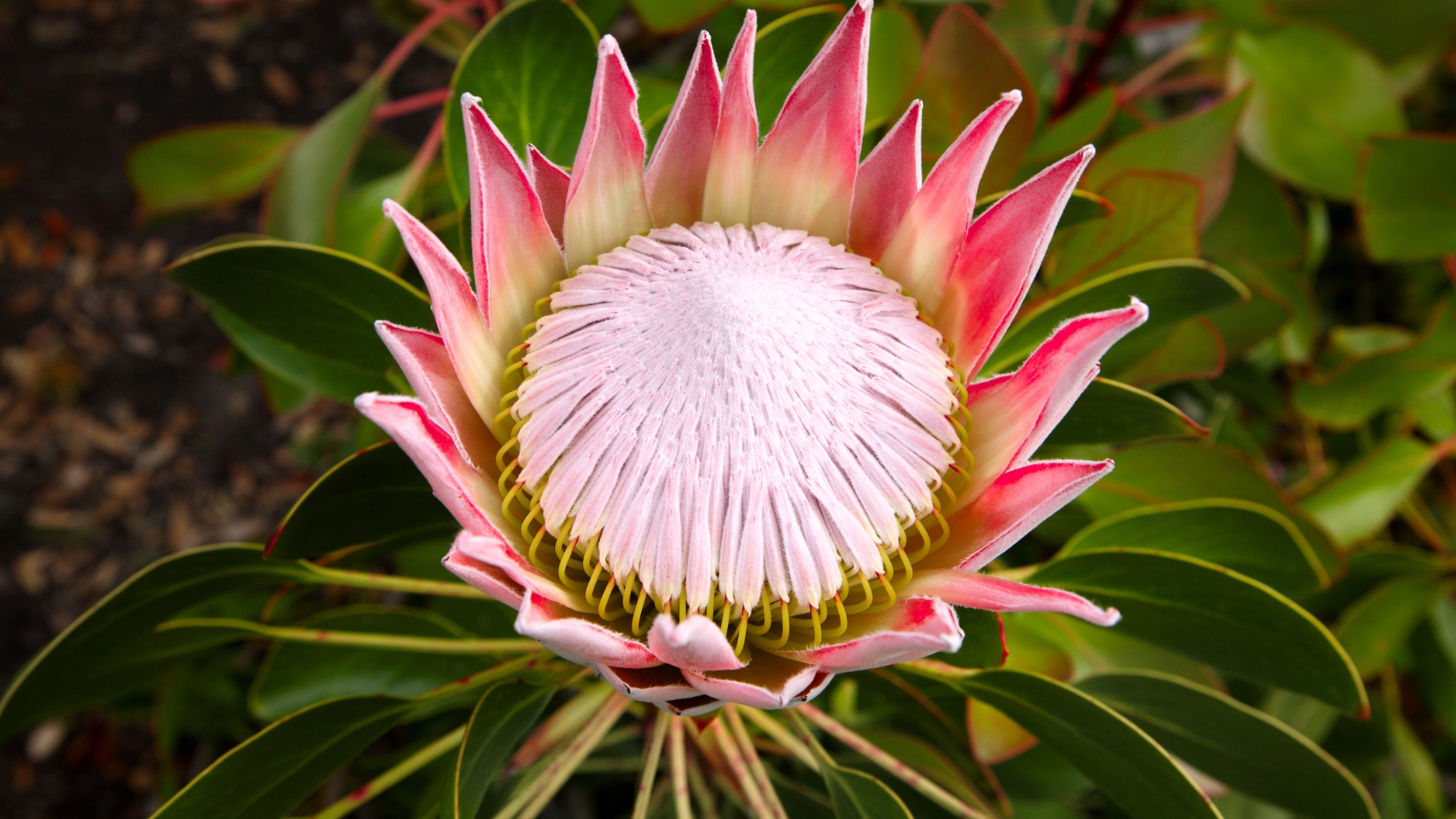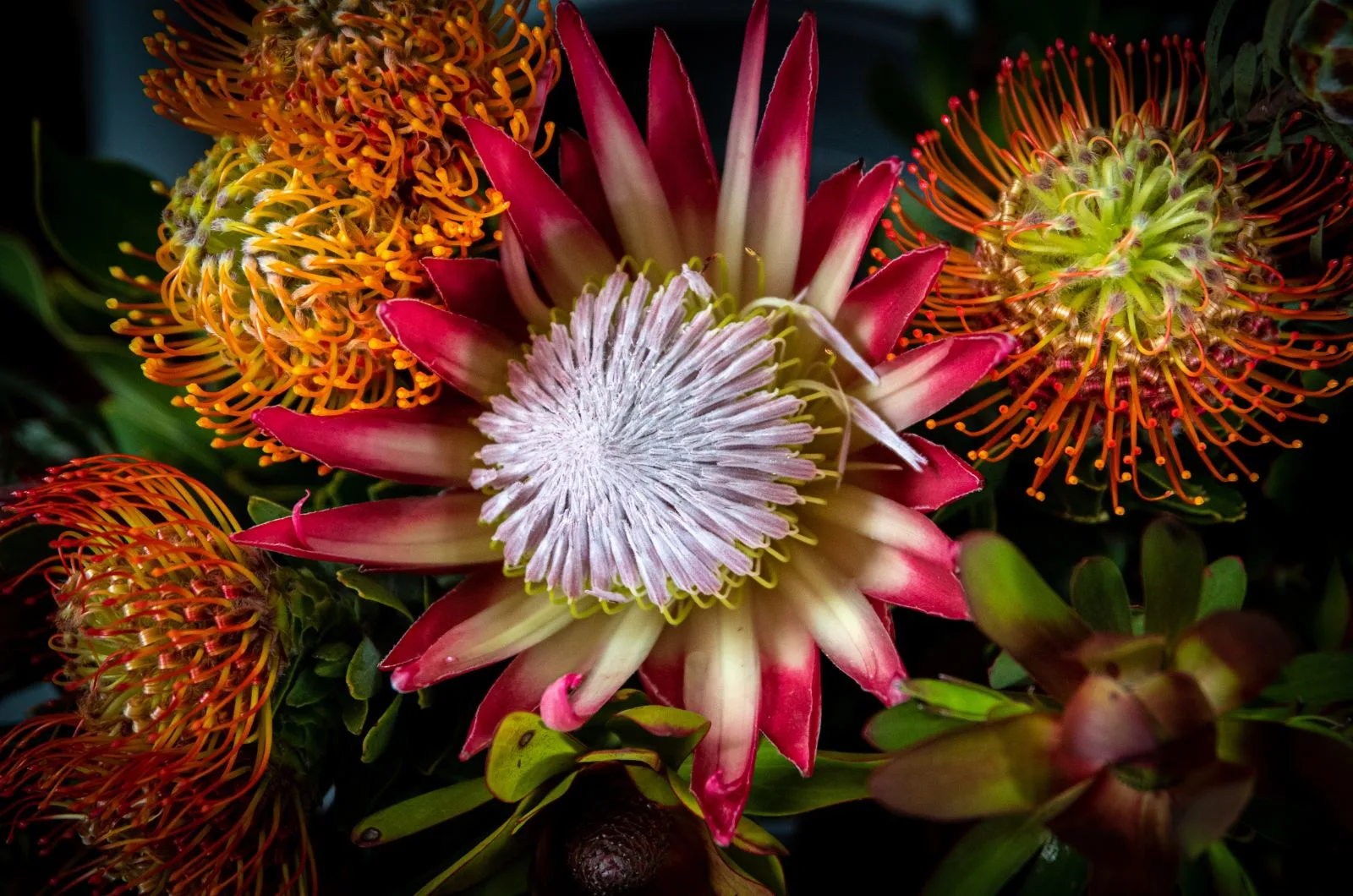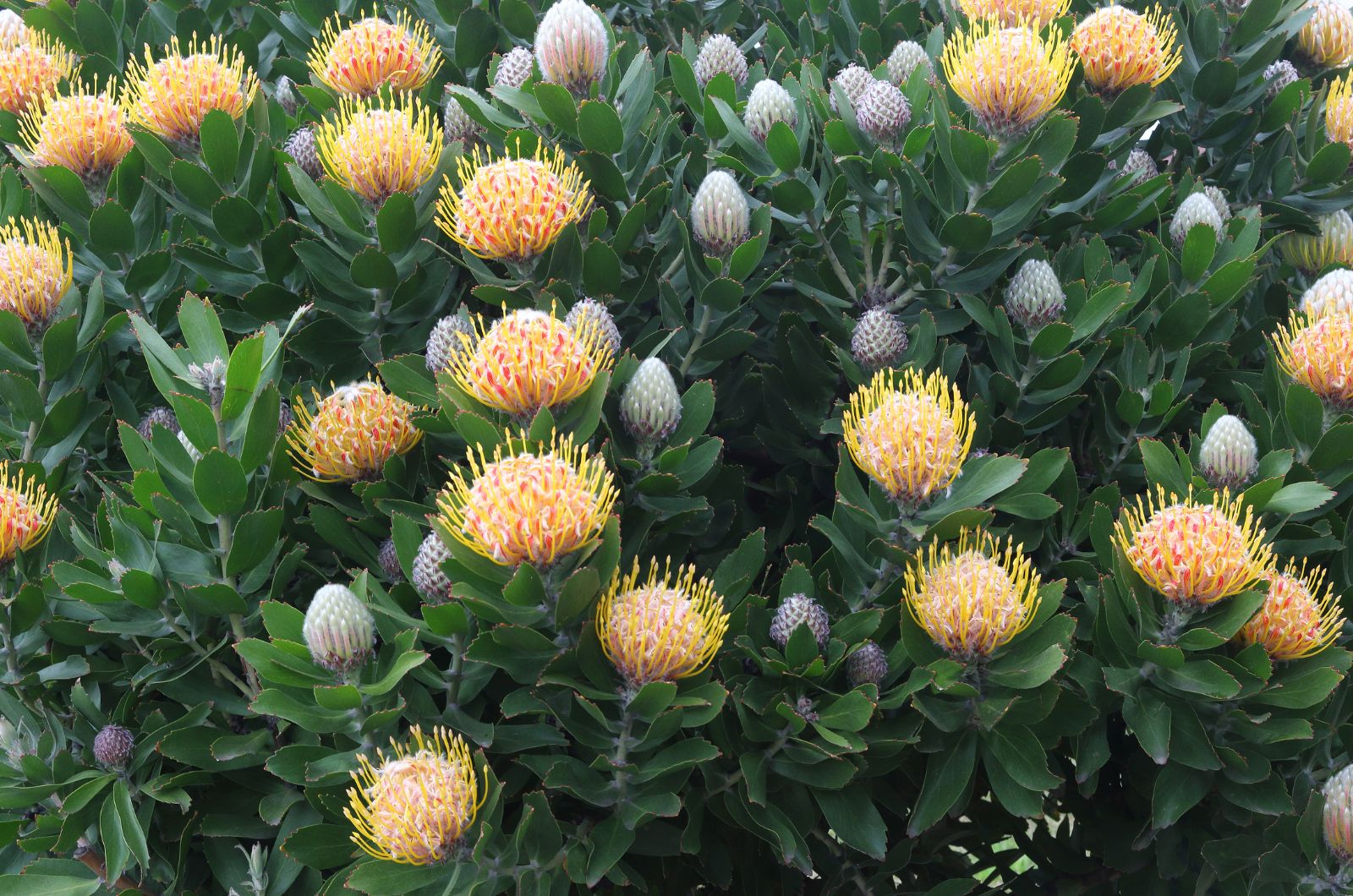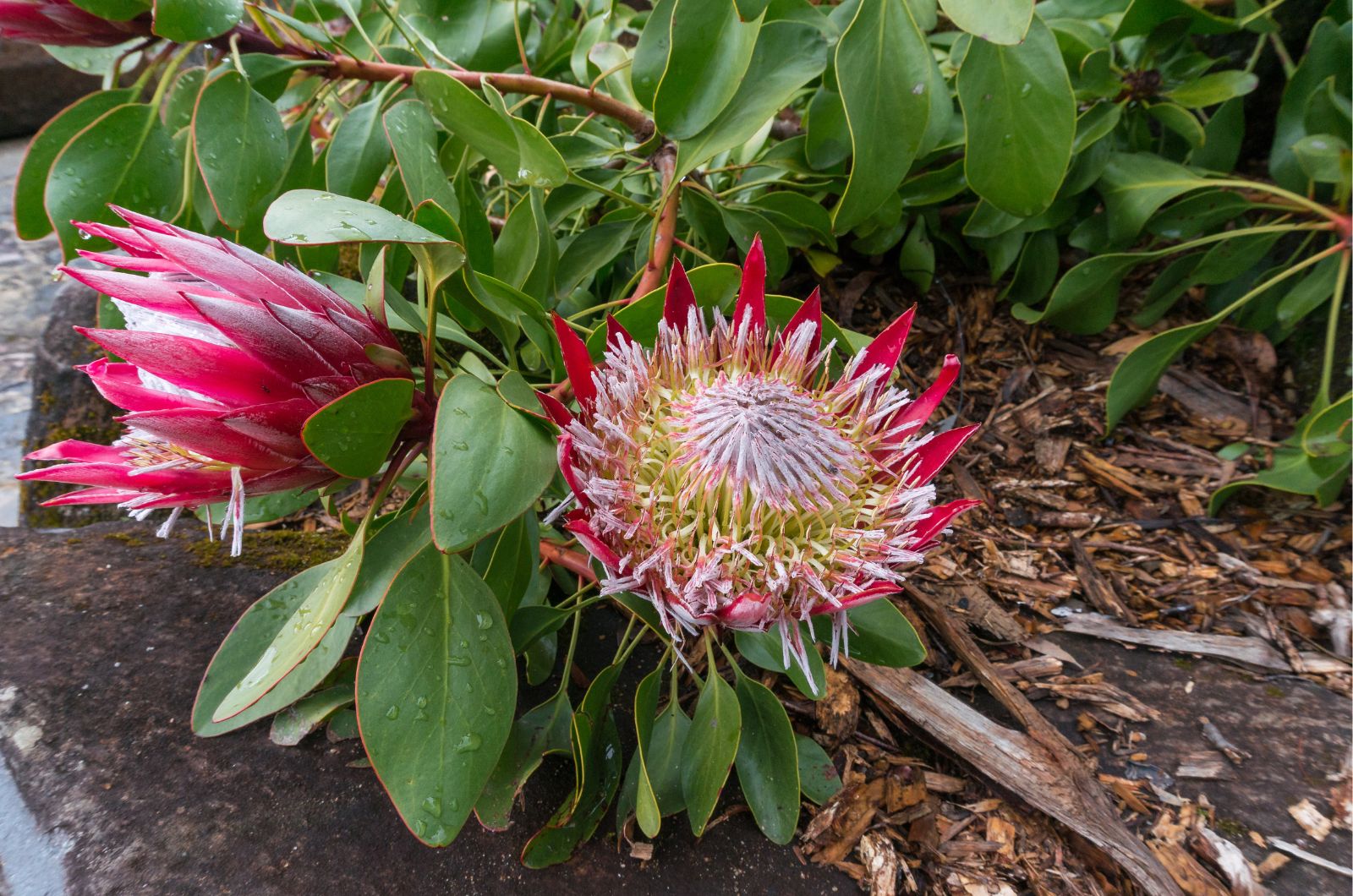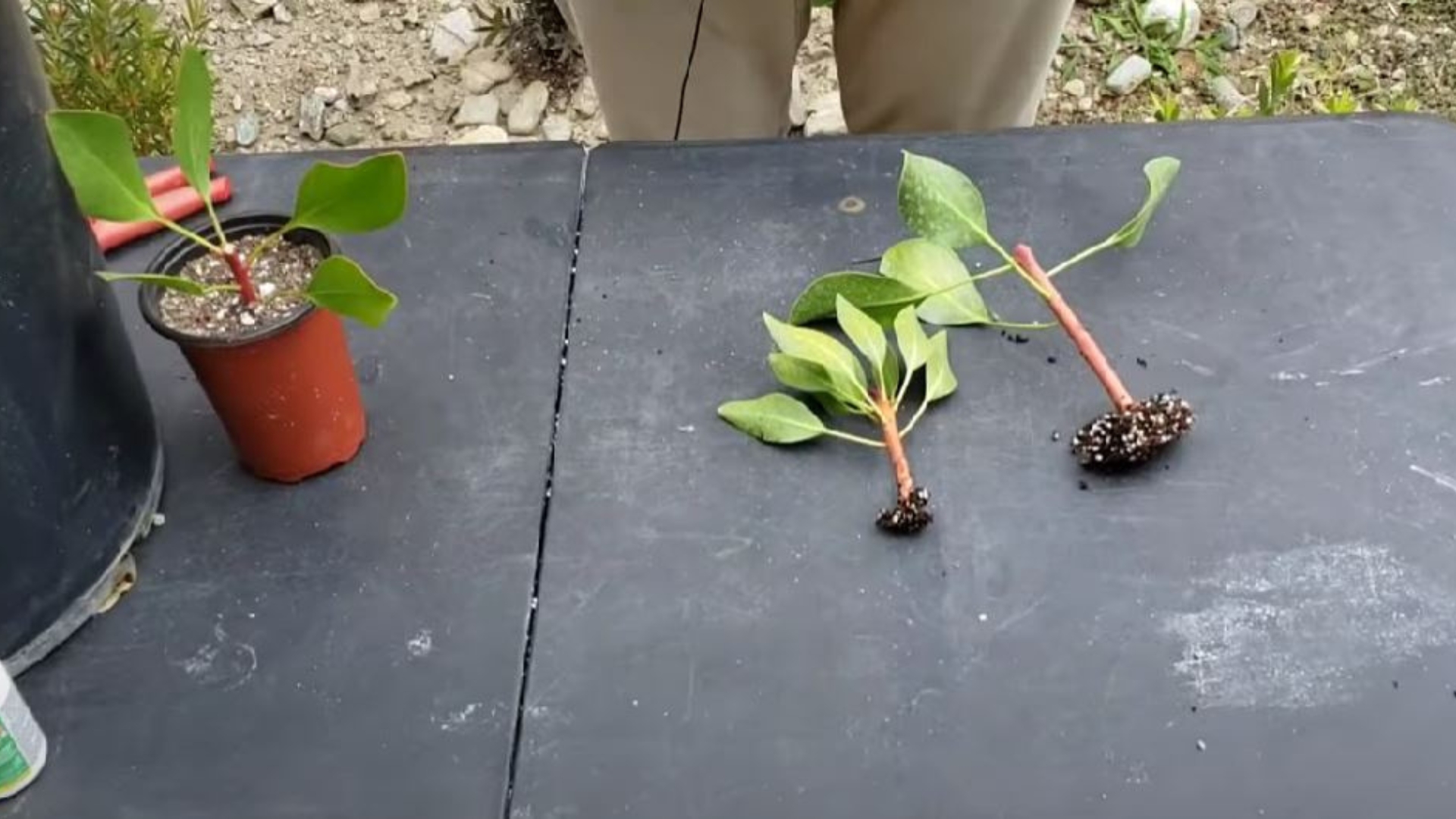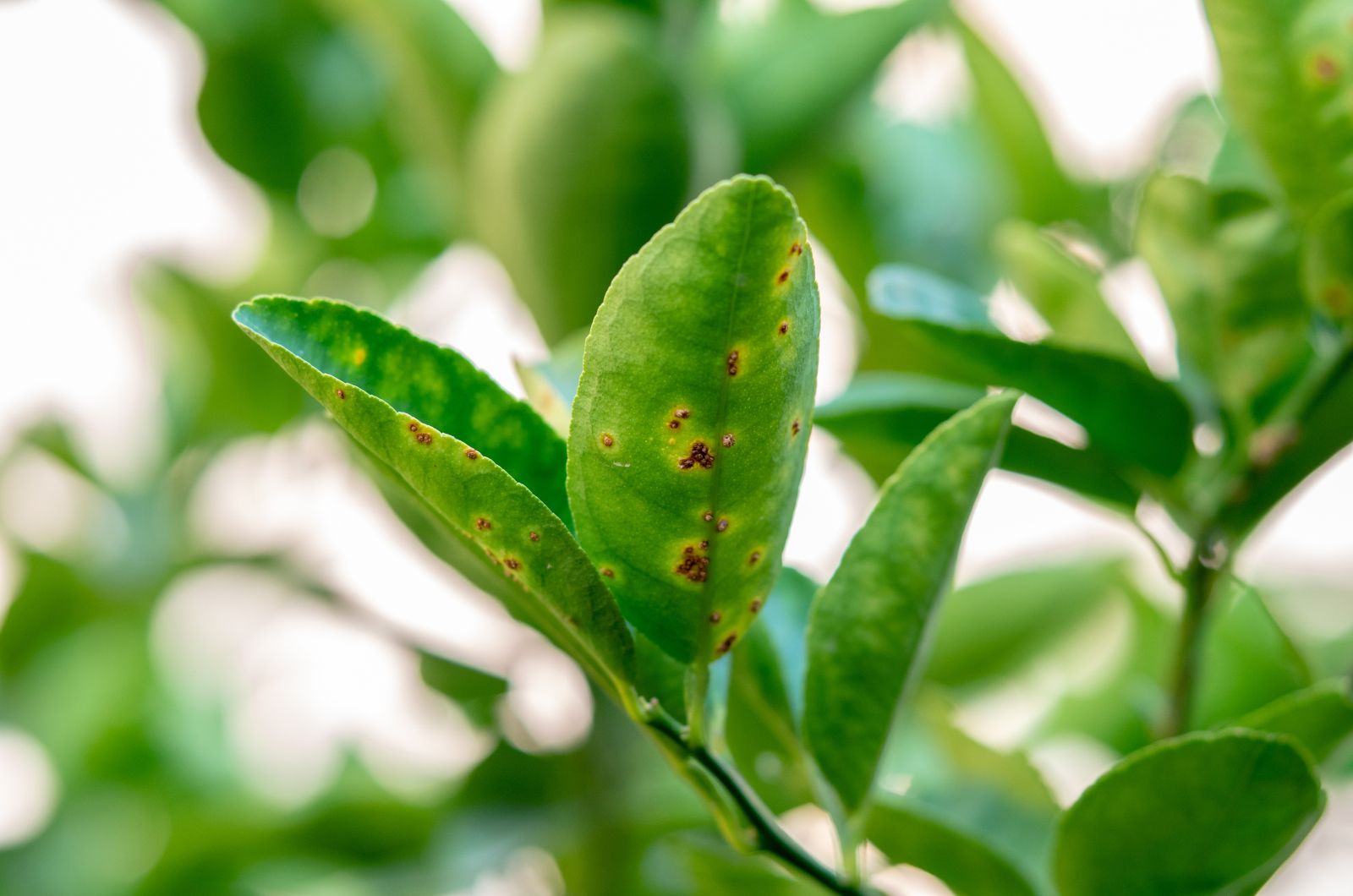Having unique landscape designs is only possible if you add unique plants. Finding such plants may not be easy, but if you’re on this quest, you’re in the right place.
Meet the one and only protea plant, which typically adorns flower bouquets but is rarely seen in gardens.
Its blossoms are formed into clusters of cone-like heads and will steal the show in any garden.
But protea plants aren’t easy-to-maintain plants and you’ll need to put some extra effort into keeping them happy and healthy.
Don’t worry, that’s why you have me! I’ll show you how to grow protea plants – from selecting a perfect variety to dealing with common issues.
Let’s get started.
More About Protea Plants
The Protea is actually a genus that consists of flowering evergreen perennials. What makes proteas so special is the enhancing blooms, but this plant has much more to offer.
The blooms last long and the plant is very resilient and can adapt to various conditions. One of the most interesting things about these perennials is that they’re one of the oldest recognized flowering plants in the world.
Believe it or not, there are certain sources that date the existence of proteas back to over 300 million years ago.
The protea blooms contain a lot of nectar, which earned the plant the nickname Sugarbush. The majority of proteas are native to South Africa and the species found there are either bush- or tree-sized.
The size of protea plants may vary depending on the species; some are only 3 feet tall whereas others can reach up to 25 feet.
The foliage is another spectacular feature of protea plants; they’re tough, leathery, and can be needle- or paddle-shaped. They come in various hues, such as bright green, bluish, or grayish-green.
Even though red proteas are the most common, there are species that generate pink, white, yellow, and orange blooms.
The size of the blooms may vary; 3 feet tall proteas can have blooms that are 5 inches in diameter whereas the blooms of King proteas can be up to 25 inches.
Varieties To Select
The Protea genus definitely has a lot to offer and it can be truly hard to choose the variety. They all look breathtaking, but here are the ones that will transform your garden into a vibrant oasis.
• Pixie: This is a hybrid variety that can reach up to 5 feet and has a compact growth habit. It has a long blooming season and it displays gorgeous blossoms with pink bracts with yellow bases and dark centers.
Pixie also produces elegant deep green foliage and is an excellent choice for containers.
• Cream Mink: This protea variety features enchanting cream-colored bracts with light brown tips. Once the blooms fully open, they reveal a creamy and brown fuzzy interior. Cream Mink flowers look like they’re covered in fur.
This protea is one of the larger varieties and can reach up to 20 feet in optimal conditions.
• Australis Passion: The word passion in the name of this protea perfectly fits it because the flowers look fantastic. The exterior bracts come in green that fades to white and bright pink.
Dark centers and silvery green foliage add a special touch of beauty to this protea. This variety typically reaches 8 feet and is frequently used in floral arrangements.
• King Protea: I saved the best, and my favorite, protea for the end! It features stunning massive bowl-shaped blossoms and bracts that come in green, pink, white, red, and silver.
King proteas can reach up to 5 feet and are an excellent choice for pollinator gardens.
How To Plant Protea
As mentioned, proteas can be finicky over the growing conditions, and the hardest part is to select a suitable location.
Conditions found in USDA zones 9 through 11 are ideal for proteas and, if you live outside these zones, it’s better to keep these plants in a pot indoors until the temperatures increase.
When looking for a spot for your protea, make sure you choose one with a lot of sun exposure and a quick-draining soil type.
Avoid spots in low-lying areas in your garden, because these plants must have good air circulation. Sandy or rocky acidic soil types are perfect for protea plants, so you will most likely need to amend your soil before planting.
Make sure you dig a hole for your protea that’s double the width and one and a half times the depth of the rootball.
Put the plant in the hole and add soil to the level of the rootball. Regularly irrigate your freshly planted protea until it generates new leaves and then reduce watering to about once a week.
A Complete Growing Guide
Ensuring an ideal environment for your protea may be tricky, but remember that you’ll be rewarded with an abundance of stunning blooms.
Here’s what it takes for your proteas to grow happy and healthy!
Light Requirements
One of the things proteas especially like is direct sun. There are varieties that can withstand partial shade but, if you want a lot of blossoms, a spot with full sun exposure is the best.
The only exception to this rule are proteas grown in very hot climates, where temperatures go up to over 100 degrees Fahrenheit. The foliage will most likely be scorched, so you should opt for a location that doesn’t receive full sun during the afternoon.
Watering Schedule
I’ve already mentioned that freshly planted proteas will need to be irrigated more frequently until they’re fully established.
It typically takes 2 years for protea plants to establish themselves, so make sure to maintain moisture. Overwatering can kill your protea, so avoid waterlogging the soil.
Mature proteas don’t need a lot of water and will most likely survive the driest conditions.
Ideal Soil Type
Adequate drainage is crucial when cultivating and proteas thrive in soil with low nutrients, preferably rocky or sandy, resembling the conditions found in Mediterranean-type soils.
These plants can tolerate very low soil pH but are not suited to alkaline conditions, and a neutral pH is not their preference. Amend soils with high silt or clay content using rock, pumice, or gravel, and avoid incorporating compost or other overly fertile ingredients.
Temperature And Humidity
Protea plants thrive in a broad temperature range, with an ideal span between 40 and 95 Fahrenheit.
While some varieties can endure temperatures as low as 25 degrees, they aren’t generally frost-tolerant, so it’s advisable not to expose your proteas to outdoor conditions when temperatures are lower than 30 degrees.
When it comes to humidity, except if you have cut flowers.
Fertilizing
One of the things proteas do not need is supplemental feeding, and phosphorus-rich fertilizers will do more harm than good to these plants.
Proteas like infertile soils but if, for some reason, they need more nutrients, make sure you use ones with low concentrations of phosphorus.
Maintenance Tips
You should prune your proteas once the flowering season ends. If your main goal with these plants is to have a lot of cut flowers, then you’ll need to prune them lightly.
When trimming your proteas, only remove branches that have bloomed this year. The ones that haven’t will reward you with blossoms the next season, so you definitely don’t want to remove them.
Each branch should be left with at least 4 inches of healthy growth after pruning.
Growing Proteas In Containers
Another amazing feature of protea plants is that they can thrive in containers. Select a clay pot, fill it with a free-draining soil type, and put your proteas in it.
Place your potted protea in full sun to maximize flower production. As these plants don’t thrive when rootbound, it’s crucial to repot and choose a larger container each year.
While these plants can endure drought, container-grown proteas need extra attention to watering, requiring a weekly schedule.
How To Propagate Proteas
If you want more proteas in your garden, you can propagate them through cuttings or seeds.
Let’s see both methods!
Propagation Through Cuttings
You can take the protea cuttings anywhere between April and December, making sure your plant is entirely healthy.
Always remove cuttings from the tips of branches and keep them in a cool spot.
Strip the leaves from the lower half of your protea cutting, dip the cut end into a rooting hormone, and plant it in growing bags with a peat and sand mixture. Remember to mist your cuttings multiple times each day.
It typically takes 6 weeks for protea cuttings to generate new roots, and then it will need to be transplanted to an acidic and quick-draining soil type.
Here’s a video:
Seed Propagation
Even though it’s common practice to purchase protea seeds, you can still collect them from the plants you already have.
First, you’ll need to allow your protea flowers to dry for approximately 12 months on the plant before collecting the seeds.
Make sure you store your protea seeds in a cool and dry location until they’re ready for planting.
When the weather warms up, you can scatter the seeds and rake them into the soil. Alternatively, you can sow your protea seeds in rows and lightly cover them with the soil.
Common Issues
These plants aren’t susceptible to pests, but when you grow proteas, you need to watch out for diseases.
Blight canker can significantly affect your proteas and even kill the seedlings. You can try treating your protea with a fungicide but if it doesn’t work, you should sterilize the soil.
Root rot disease can also occur in your protea if you overwater it. If you notice yellowing in your protea and the plant starts to shrivel, cut back on watering.
I mentioned that these plants are sensitive to phosphorus, so if you notice discoloration on the leaves, make sure to test the soil.
Proteas will definitely brighten up your outdoor space and add a unique touch, but in order for it to thrive, make sure to follow our maintenance tips!

